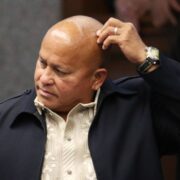Inclusive education: A resource reality check

Three years after the signing of Republic Act No. 11650 or the Inclusive Education Act, which promises that learners with disabilities will be welcomed in every public school, taught by trained teachers, guided with individualized learning, and connected to services by inclusive learning resource centers (ILRCs), the vision remains far from reach. Only around 400,000 of an estimated 5 million children with disabilities are enrolled in public schools, and support for those who are enrolled is often insufficient.
To understand these challenges, IDinsight, in partnership with the Second Congressional Commission on Education and the Department of Education (DepEd), conducted a nationwide study with 2,000 schools and 15,000 teachers. The findings show that while the law’s vision is necessary, major resource and system gaps persist.
Identification challenges leave many children unseen. Identifying who needs support is the first step in inclusion, yet processes remain fragmented. Only one-third of enrolled learners with disabilities have a formal diagnosis; the rest are tagged only as “manifesting” symptoms due to limited access to health specialists and limited teacher training.
Meanwhile, the Child Find System, which is meant to identify out-of-school children with disabilities, is still being developed. Without early and systematic identification, many children reach classrooms without assessments that could guide their learning.
Most learners lack access to trained teachers. Once learners with disabilities enter school, access to special needs education remains limited. DepEd data show that about 60 percent of these learners are in schools without a special needs education program, center, or teacher. Only one in three has a SNED teacher, and in rural areas only one in four. As a result, most are taught by general education teachers, many untrained. Just over half of teachers handling these learners have received any training on inclusive education in the past two years, and most say it was insufficient. These gaps reflect national SNED teacher shortages and the need to better prepare all teachers for inclusive classrooms.
Individualized education plans are required but rarely used. The act mandates IEPs to be made for learners with disabilities to guide instruction, yet most teachers are not using them. Creating an effective IEP requires time, assessments, and coordination with specialists and parents—support many teachers lack. Some 83 percent of general education teachers handling these learners do not use IEPs, citing that the process is too complex and they lack training and support. Even SNED teachers report that an IEP can take weeks to complete, forms are too long, and limited access to specialists make meaningful planning difficult. Without addressing these gaps, IEPs risk becoming compliance documents rather than tools for improving learning.
ILRCs remain aspirational for most communities. The Act requires an ILRC in every city and municipality, staffed by specialists to provide assessments, therapies, and school support. But only 32 ILRCs exist across more than 1,600 local governments, and none are fully operational. Interviews reveal why: therapists and specialists are scarce, public sector salary grades make recruitment difficult, and many centers face procurement delays, unclear hiring rules, or limited space. As a result, many newly constructed ILRC rooms sit unused. Without functioning ILRCs, families frequently pay out-of-pocket for needed services, or go without them altogether.
A more realistic and phased approach is needed. The vision of inclusive education is worth fighting for, but its implementation must reflect current resource realities. A phased and data-driven approach will help turn commitment into meaningful progress.
Based on the study’s findings, several priorities stand out. First, invest in early and accurate identification. A lean, resource-friendly Child Find System, along with improved screening tools and training, will help ensure learners are identified and supported sooner. Second, strengthen the workforce. Hiring and training more SNED-ready teachers should be a top priority. Deployment should target schools serving the highest concentrations of learners with disabilities. Third, simplify IEP processes. A more practical, easy-to-use IEP format and guidance on creating plans, even when specialists are limited, would help schools support learners now, while broader systems follow. Lastly, design ILRCs around local realities. ILRCs should prioritize building services aligned with local needs and available professionals. Hiring guidelines must be clarified to speed up staffing while pursuing partnerships in remote areas where hiring isn’t feasible.
—————-
Steven Walker is a senior manager at IDinsight, leading teams to deliver research and advisory services for clients across Southeast Asia. Jerick Chan is a senior associate at IDinsight, supporting their education portfolio.

















